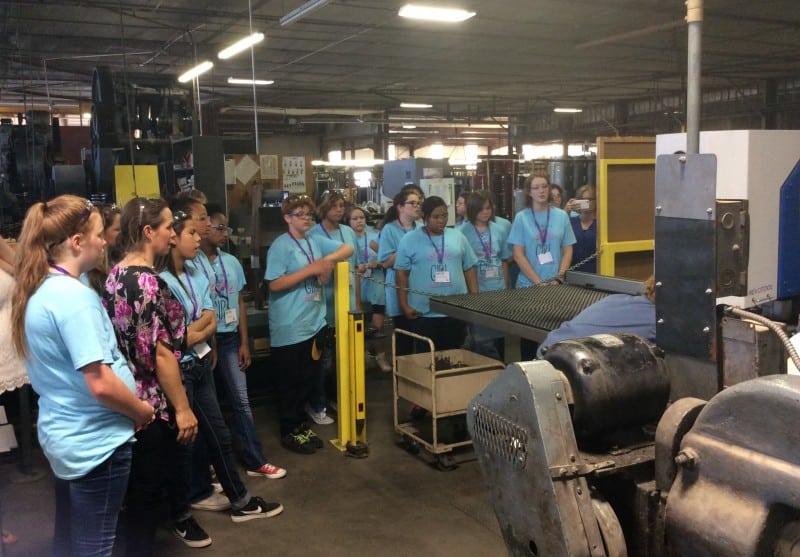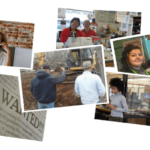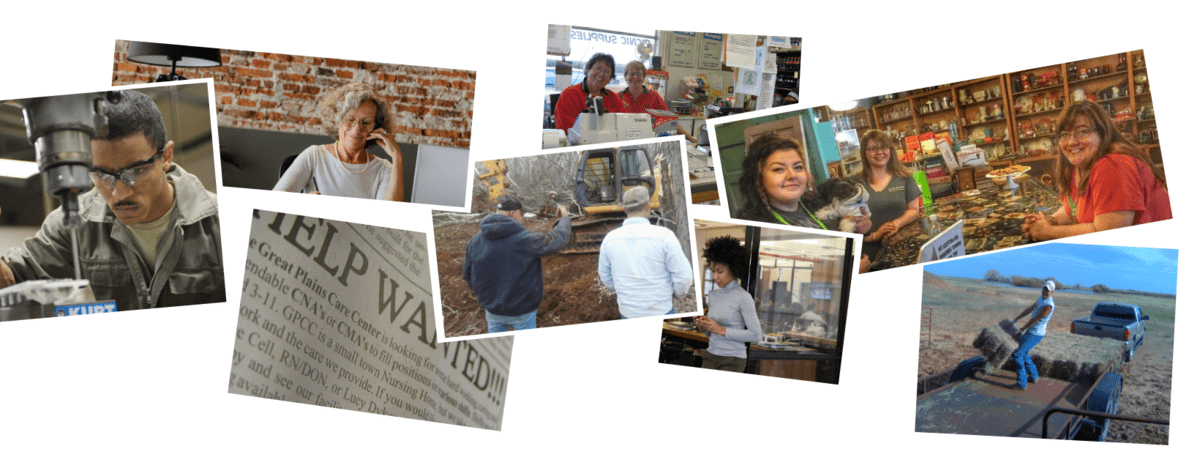Improving the rural workforce: small town stories and takeaways
Takeaways for improving rural workforce: Bring together students, employers and multiple levels of education Build and document employee skills with micro-credentials Use apprenticeships to build skills, increase awareness of local job options Stitch together multiple programs to build your own workforce To add a new program in the public schools, hire dedicated program staff (at […]
Takeaways for improving rural workforce:
- Bring together students, employers and multiple levels of education
- Build and document employee skills with micro-credentials
- Use apprenticeships to build skills, increase awareness of local job options
- Stitch together multiple programs to build your own workforce
- To add a new program in the public schools, hire dedicated program staff (at least part time)
At the Teeny Tiny Town Summit held in Woodward, Oklahoma, a panel of local people addressed rural workforce challenges and what actions they were taking to address them.
The panelists were
- Barclay Holt, High Plains Technology Center, Woodward, Oklahoma
- Joe Cox, Oklahoma Works at Oklahoma Department of Commerce
- Brad Griffiths, Oklahoma State Regents for Higher Education
- Liz Leaming, Ponca City Development Authority, Ponca City, Oklahoma
And I’ll share some additional information from:
- Roger Knak, Fairview Regional Medical Center, Fairview, Oklahoma
Bring together students, employers and multiple levels of education
To encourage local students to consider additional local career options, High Plains Technology Center offers TAP (Technical Applications Program) for sixth through 10th graders, Barclay Holt said. The project is for career exploration that leads into the full-time training programs at HPTC. Think hands-on welding, tool and equipment use. All of the kids get to see and participate in all of the education areas. It is held at Woodward schools in their existing buildings, and at other schools across the HPTC district.
This brings together the two levels of education (career tech and public schools) in a way that didn’t require a lot of new investment. They also partner with community leaders, business owners, and parents.
Build and document employee skills with micro-credentials
Brad Griffiths explained UpskillOK.org, a micro-credentialing program of the Oklahoma State Regents for Higher Education. It offers a different way to approach employee training and development. Employers can collaborate with Oklahoma colleges and universities to develop a standardized credential for specific career skills. Other states and territories offer similar programs.
Just a few examples from the hundreds of current micro-credentials include:
- Government and Not-for-Profit Accounting
- Artificial Intelligence – Game Developer
- Mechanical Design
- Court Reporting Skills
Many of these also connect to industry certifications, like Google Career Certificates and CompTIA.
Higher education tends to measure courses in credit hours, and these micro-credentials include nine credit hours. These are smaller than the university certificates offered at some institutions, which take more hours. Micro-credentials can include learning through activities and projects, so they’re looking to connect with apprenticeship programs for work-based learning.
Use apprenticeships to build skills, increase awareness of local job options
Oklahoma Works Joe Cox has worked with local employers across the state to start apprenticeship programs in local businesses. When he started, most existing apprenticeships were in Oklahoma City or other metro areas. He has worked to expand to rural communities, including Watonga, Oklahoma.
He said it is a program that takes someone not necessarily fully qualified and gives them a chance at employment. The program has 97% retention rate. The apprenticeship can be a one to four year program. Cox often connects employers with the Oklahoma Department of Rehabilitation Services to help their clients connect with apprenticeship jobs.
Connecting students to existing local employers and jobs helps increase the chances to retain young people in rural communities.
Stitch together multiple programs to build your own workforce
Roger Knak with Fairview Regional Medical Center, Fairview, Oklahoma, presented on the health care panel, and he addressed how they build their workforce. Because they employ people in a variety of fields, they have to work with multiple workforce programs to grow their employees’ skills.
- They provide stipends to support their nurses with lower level CNA certification to complete their higher level LPN degrees.
- For their IT needs, they have a paid internship to work with their full time IT staff person.
- Their lab technicians complete online training through Barton County Community College from Kansas.
Roger told me that he wasn’t aware of the Oklahoma Works apprenticeship programs until this event. He planned to check how he could connect his IT internship to the state program. That is the power of holding local events and encouraging local networking.
Grow your own workforce
Ponca City, Oklahoma, has created multiple workforce programs. Liz Leaming from Ponca Works talked about growing their own workforce.
Ponca Works connects high school seniors who do not plan to attend college with local employers. Once per month all year the seniors meet with representatives from employers for Cookies and Careers. This encourages students to pursue local employment even if they don’t plan on college.
Ponca Works also uses augmented reality to give tours of local companies in a safer way. Some workplaces may not be set up for large group tours, or may have dangerous equipment. Using AR, students can get a virtual experience without compromising their safety.

Some workplaces can be toured, like Lindsey Manufacturing, maker of central vacuum systems. Other workplaces are safer to tour by Augmented Reality instead. Photo courtesy of Ponca City Development Authority.
Ponca City also offers a Girl Power STEAM camp. Here is how they explained the origin of the project:
When Ponca Works began there was a job posting for an office position with about 100 applicants, all female. At the same time there were dozens of jobs in the technical field that were open. It wasn’t a surprise, but more of a wake up call, at the large gap of girls and STEM careers. Girl Power exposes middle school girls to strong women with STEM careers in our community, hands on activities that teach exploration in science, technical skills, problem solving, critical thinking, and much more. We also tour facilities in Ponca City that offer careers in those fields. Our first campers will be entering the workforce next year, and we are excited to see what they are choosing to pursue.
Ponca Works also led a project to standardize all education and career players on a single evaluation tool so students could be evaluated once and move through any of the local workforce programs.
Liz mentioned that lots of kids are interested in forensic science, but it is a massively under-employed field with no direct employment opportunities locally. Drawing on similar skills, some students have been redirected into microbiology jobs which are available locally, such as the local manufacturer that needs lab analysis for their animal food supplements.
The Ambassador Program at Ponca Works trains younger employees at local businesses to share their story of local career opportunities with high school students.
To add a new program in the public schools, hire dedicated program staff (at least part time)
Ponca Works also offers a Wildcat Internship for juniors and seniors in high school. Students spend 1 to 3 hours a day at an employer. Around 30% of those students are paid. At the end of the program, around 10% get hired. There are 108 participating this year.
Before they hired a dedicated staffer at the schools, internship enrollment lagged. People at the school simply did not have capacity to manage yet another program.
Actions for rural employers to build their local workforce:
- Establish apprenticeship and internship programs: Apprenticeships and internships can help build skills and increase awareness of local job options. Look for state programs and projects to build support for internships and apprenticeships.
- Connect with multiple workforce development programs: Employers can provide stipends for employees to continue their education, connect with higher education micro-credentials and partner with educational institutions across geographic boundaries for specialized education.
- Engage with local schools: Employers can partner with local schools to offer programs to help students gain hands-on experience in various fields. Connect with high school seniors who do not plan to attend college and offer them employment opportunities. This can help retain young people in rural communities.
- Promote STEAM education: Employers can support local initiatives, camps, and programs that exist in the community.
- Hire dedicated program staff: If adding a new program in public schools, it’s important to hire dedicated program staff to promote the program effectively.
- Standardize evaluation tools: Work with educators and career specialists to agree on a single evaluation tool so students can take a single evaluation to use at any of the programs.
- Engage in local networking: Employers can participate in local events and networking to learn about new programs and opportunities.
More resources
- Grow Your Own Workforce, Katherine Long, CEcD, Ponca City Development Authority
- Reaching “at risk” kids for local jobs, two real-world examples, SmallBizSurvival
- Finding Good Employees: Rural Workforce Trends video, SaveYour.Town

